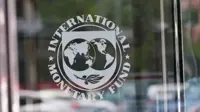Pfizer, Mylan lower HIV drug prices for drug-resistant patients
08 Aug 2009
For the first time, a second-line regimen of four anti-retri viral (ARV) drugs will be available for under $500 annually, as part of the Clinton Foundation's efforts to bring low-cost treatment to HIV paqtients in por countries.
Additionally, as part of the foundation's initiative, drug makers Pfizer and Matrix, a Mylan company, will reduce the cost of a key drug for treating tuberculosis (TB) in patients using second-line ARVs has been reduced by 60 per cent to $1 per dose, that would benefit around 2 million patients sufering from drug-resistant HIV / Aids.
Former US president, Bill Clinton today announced the two important and complementary agreements signed by the Clinton Foundation by Matrix, and Pfizer to enable better, more affordable treatments for patients on second-line antiretroviral (ARV) therapy for HIV/AIDS in the developing world.
''Thanks to the work of my foundation's HIV/Aids initiative, 2 million people living with HIV/Aids are now able to access lifesaving treatment,'' President Clinton said. ''But their continued survival depends on uninterrupted access to medicines and quality and affordable health care throughout their entire life. Today's announcement will help ensure we can sustain treatment over a lifetime and better treat patients with both HIV and TB, two key steps in turning the tide of the global HIV/AIDS pandemic.''
Addressing the need for more affordable second-line ARVs, Mylan and Matrix are making available all four drugs – atazanavir (ATV), ritonavir (RTV), tenofovir (TDF), and lamivudine (3TC) – needed to enable once-daily treatment of patients who have developed resistance to standard first-line ARVs.
The four drugs will be available in three pills, with tenofovir and lamivudine combined into a single pill. The three pills are being made available from today as separate products, with a total price of less than $475 annually. Matrix also will sell the pills together in one package – a ''second-line-in-a-box'' – at $425 annually starting in 2010.
These new products and prices will be available to governments that are members of the Clinton Foundation's Procurement Consortium across Africa, Asia, Latin America, and the Caribbean. The drugs, referred to as TDF+3TC is FDA approved, and ATV and RTV are pending approval by the World Health Organisation.
according to Mylan chairman and CEO Robert J Coury, ''Ensuring sustainable access to effective treatments in the developing world is a critical element in the global fight against HIV / Aids. Mylan and Matrix are proud to continue our commitment of creating and introducing innovative and affordable pharmaceutical solutions. This includes our 'second-line-in-a-box,' which will reduce patient pill burden and facilitate patient compliance. Our affordable, heat-stable version of ritonavir also represents another advance in the development of products that can withstand environmental conditions in parts of the world where treatment is desperately needed.''
Citing the importance of integrating HIV/Aids and tuberculosis treatment, President Clinton also announced an agreement with Pfizer to reduce the price and expand the availability of rifabutin, a drug used to treat tuberculosis in patients taking second-line ARVs. This marks CHAI's first pricing agreement with a research-based pharmaceutical company, as well as its first pricing agreement on tuberculosis. Pfizer will sell the product at $1 per 150 mg dose, or $90 for a full course of treatment over six months. This price will be available throughout developing markets in Africa, Asia, Eastern Europe, Latin America, the Middle East, and the Caribbean.
Tuberculosis is the leading cause of death among HIV-positive patients. The WHO reports that over one-third of all individuals living with HIV also are infected with tuberculosis, resulting in over 450,000 deaths in 2007.
Jeffrey B Kindler, Chairman and CEO of Pfizer stated that, ''Pfizer is pursuing numerous global health projects like this one with the Clinton HIV/AIDS Initiative to find new ways to connect people to the medicines they need. ''We are working on innovative solutions to bring health care to customers who have often been neglected in the past and do this in a socially responsible, sustainable, and commercially viable way.''
''Second-line-in-a-box''
The new Matrix product announced today will create a more convenient second-line ARV treatment option. Patients will take three pills once a day instead of five or more pills twice a day (i.e. at least three in the morning and at least two in the evening) as required by alternative regimens. Additionally, the products will include the first ever heat-stable version of ritonavir, which does not require continuous refrigeration for its transport and distribution.
Noting advantages in convenience and affordability, WHO has identified the development of a second-line ARV therapy including atazanavir and ritonavir as a top priority. However, until now, this regimen has been largely unavailable since the existing ritonavir formulation required continuous refrigeration, a major challenge for developing countries with limited infrastructure. Countries have begun to adopt this regimen in national treatment guidelines in anticipation of improved product features and pricing, and the Clinton Foundation expects many more to follow suit to take advantage of the agreements announced today.
If fully adopted, the new products and prices would enable cumulative cost savings of $400 million over the next 5 years, when compared with recent prices paid for alternative regimens. Although only 3 per cent of total patients on treatment in low-income and sub-Saharan African countries are taking second-line ARVs today, these patients account for nearly 20 per cent of total ARV expenditures because of the high cost of second-line drugs compared to first-line drugs.
These percentages will grow steadily in the coming years as increasing numbers of HIV/AIDS patients experience first-line treatment failure. There were between 200,000 and 250,000 second-line patients across the developing world at the end of 2008. This number is expected to double over the next three years.
UNITAID helped to make the second-line ARV price reductions announced today possible through its Second-Line Project, implemented by CHAI in partnership with UNITAID.
UNITAID funding for this project has created a reliable market for key second-line medicines by increasing and aggregating demand across 25 beneficiary countries. Predictability of demand encourages suppliers to pursue accelerated R&D on new products and enables them to offer lower prices by achieving economies of scale and reducing production risks.
Treating tuberculosis co-infection in second-line HIV/AIDS patients
The agreement with Pfizer enables a more effective and affordable treatment option for second-line ARV patients who also require treatment for tuberculosis. The treatment of HIV-tuberculosis co-infection is complicated by an undesirable interaction between standard tuberculosis medicines and protease inhibitors – the class of ARVs that represent the backbone of second-line treatment.
To counteract this effect, clinicians often adjust a patient's ARV therapy to increase the normal dose of certain drugs, producing higher levels of toxicity, worse treatment outcomes, and significantly higher costs. Pfizer's rifabutin does not interfere with protease inhibitors, allowing patients to take ARVs at normal doses.
WHO highlighted the importance of rifabutin by adding it to the Essential Medicines List (EML) in March 2009. The announcement with Pfizer today makes it more affordable to treat TB and HIV simultaneously among patients on second-line ARV therapy, cutting total drug costs by nearly $200 (or 33 percent) over a full six-month course of TB treatment when compared to the most-preferred current treatment option.
Ongoing efforts to ensure the quality and affordability of treatment
The financial support of UNITAID, the United Kingdom Department for International Development, and the Bill & Melinda Gates Foundation has enabled the Clinton Foundation to pursue this work. The two agreements announced today represent only the latest steps that the Clinton Foundation and its partners have taken to ensure that the highest quality treatments are available at the most affordable prices.
These agreements are part of Clinton HIV/Aids Initiative's (CHAI) commitment to ensuring the availability of high-quality drugs. Pfizer's rifabutin is approved by the United States Food and Drug Administration (U.S. FDA). Pfizer also is preparing to file with the WHO Prequalification Programme.
Matrix has received U.S. FDA approval for its tenofovir/lamivudine combination pill. Matrix has filed dossiers for atazanavir and heat-stable ritonavir with the WHO Prequalification Program and WHO Expert Review Panel (ERP); dossier submissions include data establishing bioequivalence to the reference drugs. Once approved by the WHO ERP, WHO Prequalification Program, or U.S. FDA, products can be purchased by governments using funds from the Global Fund to Fight AIDS, Tuberculosis, and Malaria.
Since 2002, the Clinton HIV/AIDS Initiative (CHAI), a project of the William J. Clinton Foundation, has assisted countries in implementing large-scale, integrated care, treatment, and prevention programs. CHAI works side-by-side with more than 20 countries in Africa, Asia, Eastern Europe, and Latin America and the Caribbean to build systems that will deliver HIV/AIDS treatment and health care by providing governments with technical assistance, leveraging human and financial resources, and facilitating the sharing of best practices across nationwide projects. CHAI also brokers agreements to lower prices of essential medicines and diagnostics, which are now accessible to more than 70 countries, representing more than 90 per cent of people living with HIV/AIDS in the developing world. Today, 2 million people are receiving lifesaving treatments purchased under CHAI negotiated agreements.






.webp)

















